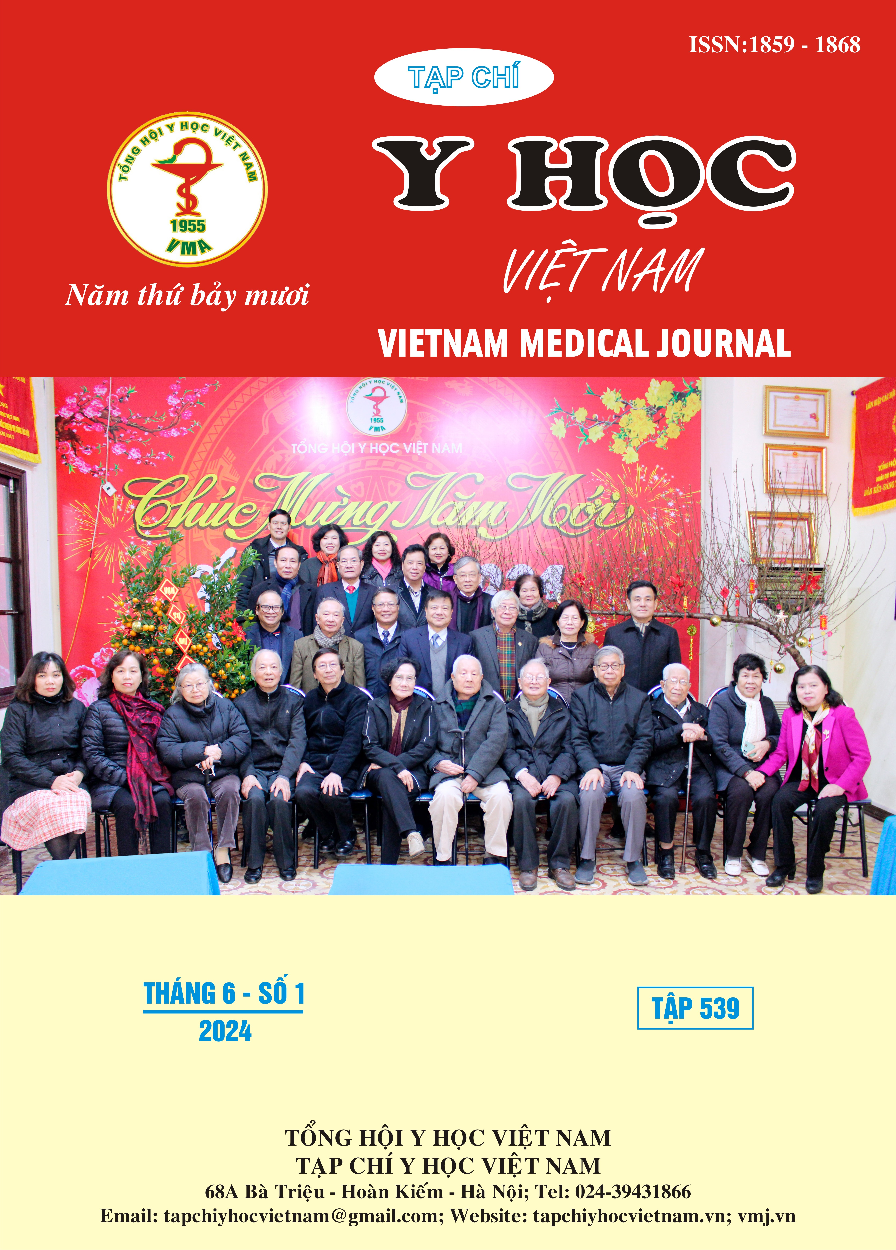MANAGEMENT OF PLACENTA ACCRETA AT HANOI OBSTETRICS AND GYNECOLOGY HOSPITAL
Main Article Content
Abstract
Objectives: Evaluation and treatment of placenta previa and placenta accreta at Hanoi Obstetrics and Gynecology Hospital. Subjects and methods: Retrospective descriptive study of 76 pregnant women diagnosed with placenta previa and cesarean section scars treated at Hanoi Obstetrics and Gynecology Hospital. Results: 76 pregnant women with placenta accreta were diagnosed and treated at Hanoi Obstetrics and Gynecology Hospital. The rate of planned cesarean section is 86.8%, emergency cesarean section is 13.2%; general anesthesia accounts for 98.7%, epidural anesthesia accounts for 1.3%; Horizontal incisions and the low midline incision are 61.8% and 38.2%, respectively; Transverse uterine body incision and longitudinal uterine body incision for cesarean section were 61.8% and 38.2%, respectively; 55.3% of pregnant women had conservative surgery, 43.4% had a partial hysterectomy, and 1.3% had a total hysterectomy; 9.3% of surgical cases had complications, of which bladder, ureteral complications and re-operation were 6.7%, 1.3% and 1.3%, respectively. Conclusions: The rate of planned cesarean section in pregnant women with placenta accreta is high, undergoing general anesthesia, horizontal incision, and horizontal uterine body incision. Placenta accreta surgery tends to conserve the uterus with the most common complication being bladder damage.
Article Details
Keywords
Placenta accreta, placenta praevia
References
2. G. Garmi and R. Salim (2012). Epidemiology, etiology, diagnosis, and management of placenta accreta. Obstet Gynecol Int, 2012, 873929.
3. S. Wu, M. Kocherginsky andJ. U. Hibbard (2005). Abnormal placentation: twenty-year analysis. Am J Obstet Gynecol, 192 (5), 1458-1461.
4. R. Faranesh, S. Romano, E. Shalev et al (2007). Suggested approach for management of placenta percreta invading the urinary bladder. Obstet Gynecol, 110 (2 Pt 2), 512-515.
5. G. M. Mussalli, J. Shah, D. J. Berck et al (2000). Placenta accreta and methotrexate therapy: three case reports. J Perinatol, 20 (5), 331-334.
6. B. Poljak, D. Khairudin, N. Wyn Jones et al (2023). Placenta accreta spectrum: diagnosis and management. Obstetrics, Gynaecology & Reproductive Medicine, 33 (8), 232-238.
7. N. M. Hùng (2017). Nghiên cứu Kết quả Điều trị rau cài răng lược trên sẹo mổ lấy thai tại Bệnh viện Phụ sản Hà Nội Luận văn Thạc sỹ Y học, Đại học Y Hà Nội.
8. L. X. Thắng (2020). Nghiên cứu kết quả phẫu thuật rau cài răng lược trên bệnh nhân có sẹo mổ lấy thai tại Bệnh viện Phụ sản Hà Nội Luận văn chuyên khoa cấp II, Đại học Y Hà Nội.
9. L. H. Chương (2012). Nghiên cứu xử trí rau cài răng lược tại Bệnh viện Phụ sản Trung ương. Tạp chí Y học thực hành, 11/2012,
10. N. T. Công (2017). Giá trị của siêu âm trong chẩn đoán rau tiền đạo cài răng lược ở thai phụ có sẹo mổ lấy thai tại Bệnh viện Phụ sản Trung ương, Luận văn Bác sĩ chuyên khoa cấp II, trường Đại học Y Hà Nội.


